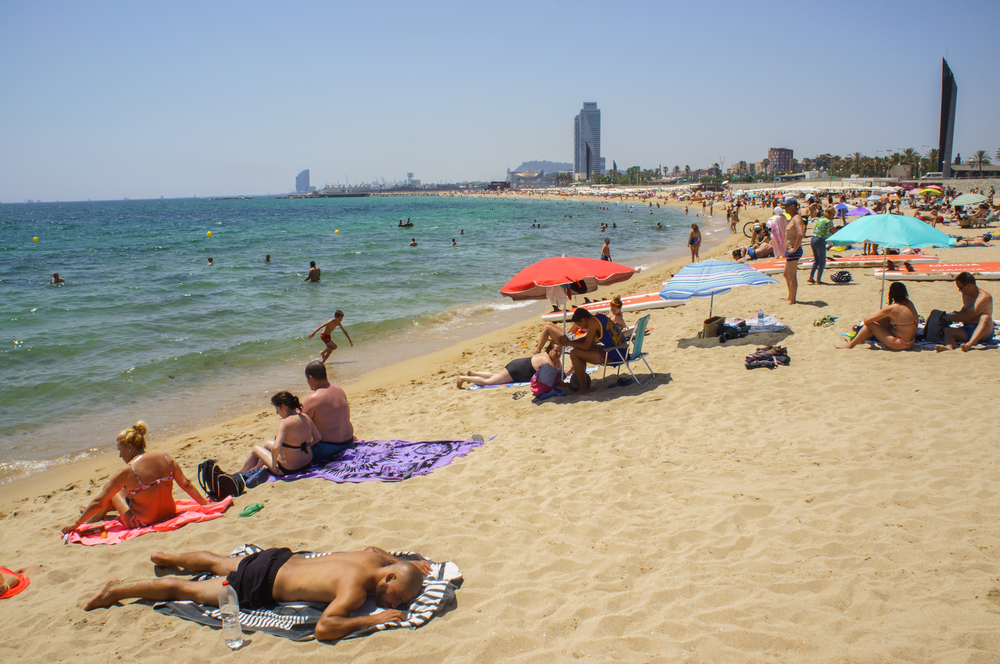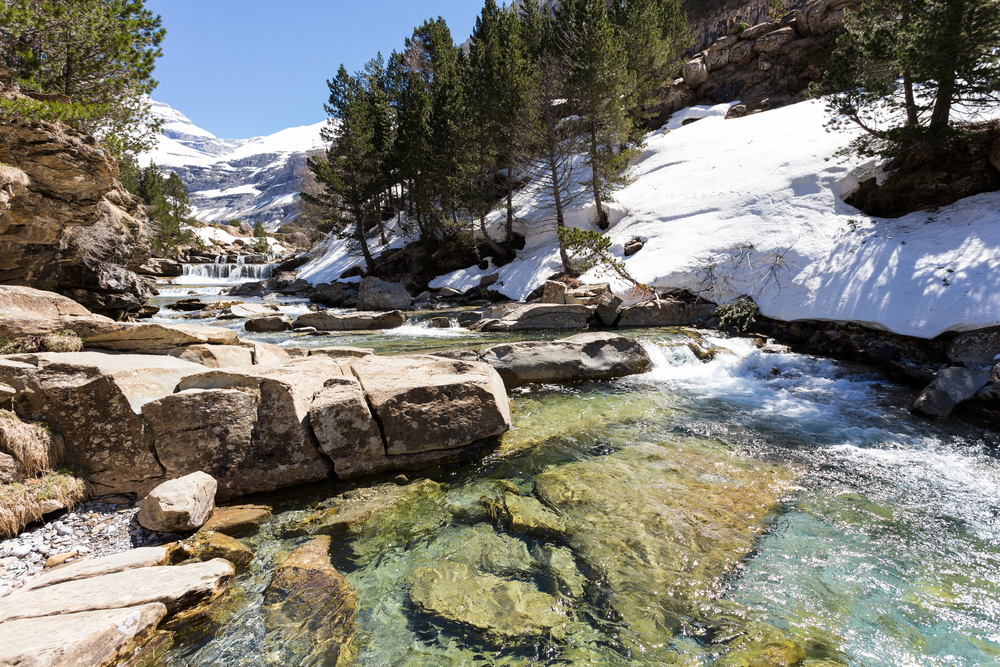Points of Interest
Aigüestortes i Estany de Sant Maurici National Park
Lleida, Catalonia, Spain
This park, created in 1955, occupies the heart of the Pyrenees and includes tall mountains, lakes (nearly 200 of them), and streams. The park covers an expanse of 40,852 hectares (100,947 acres) and has four vegetation zones that vary depending on the elevation, which ranges from 1,600 to 3,000 meters (5,250 to 9,843 feet). They include lower montane, upper montane, sub-alpine, and alpine vegetations. Wildlife species endemic to this region include Pyrenean chamois, marmots, ermines, roe deer, black woodpeckers, common crossbills, Lammergeiers (bearded vultures), and golden eagles.
Beach Day
Barcelona, Spain
It’s difficult to top a day at the beach, especially when kids are along for the trip. Have some refreshing and carefree fun as the whole family splashes and plays along the Mediterranean Sea at Barceloneta Beach, one of the city’s oldest and most popular. Located in the fishing district of the same name, it is easy to reach though often crowded. Olympic Village’s beach, in the Sant Martí district, has a playground with structures that little ones can climb. Close to Olympic Village is Nova Icària Beach, a peaceful area that includes lifeguards, showers, bathrooms, food kiosks, and play areas. Bogatell Beach is found between Nova Icària and Mar Bella beaches, offering play areas, beach umbrellas, bathrooms, showers, and vendors selling ice cream. In total, Barcelona has eight blue flag beaches, designated so for clean sand and water, easy access, good signage, and environmental education campaigns. The city’s eight beaches are: Sant Sebastià, Sant Miquel, Barceloneta-Somorrostro, Nova Icària, Bogatell, Mar Bella, Nova Mar Bella, and Llevant.
Doñana National Park
Parque Nacional de Doñana Almonte, Spain
Popularly known as Coto de Doñana, Doñana National Park covers an expanse of 54,300 hectares (134,178 acres) and supports diverse ecosystems. A part of the area is a protected reserve for migratory birds and endangered species like Spanish imperial eagles and Iberian lynxes. The park offers visitors a variety of facilities including campsites, bird watching stations, and recreation grounds, and long stretches of beaches are open to the public. The park also provides guided tours on boats that sail from Sanlúcar de Barrameda and up the river.
Ordesa and Monte Perdido National Park
Parque Nacional de Ordesa y Monte Perdido Pyrenees of Huesca
Aragón, Spain
The National Park was created in 1918 by a royal decree and covers an area of 15,608 hectares (38,568 acres). The park's topography, consisting of mountainous crests and glacial valleys, has the distinction of being the biggest calcareous mass in Europe. Karstic formations with a multitude of caves, canyons, and chasms dominate the landscape. The Tube of Añisclo and the Gorges of Escuaín, which consists of glacial cirques (basin-shaped formations), are among the important features of the park. The valleys support a lush vegetation of beeches, firs, and black pines. Important wildlife species of the Pyrenees that inhabit the park include marmots, boars, sater moles, royal eagles, common vultures, hawks, and royal owls.
Tablas de Daimiel National Park
Parque Nacional de las Tablas de Daimiel Carr. a las Tablas de Daimiel
Daimiel 13250, Spain
Spain's smallest national park, Tablas de Daimiel National Park is primarily comprised of plains and wetlands. Covering an area of 1,928 hectares (4,764 acres), this unique ecosystem has large pools of water, formed as a result of the overflow of its rivers, which provide perfect breeding grounds for many species of birds. The park is also a haven for migratory birds that flock here to escape harsh winters elsewhere. Some of the species that inhabit the park and provide a visual feast for bird watchers include great crested grebes, common grebes, black-necked grebes, herons, and egrets.
Copyright © 1993—2024 World Trade Press. All rights reserved.

 Spain
Spain 



